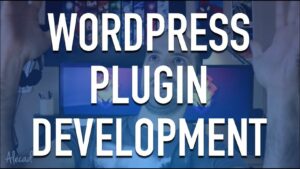WordPress Plugin Development Tutorial
 Are you looking to enhance your WordPress website with custom features? Delving into wordpress plugin development tutorial could be the key to unlocking endless possibilities for your site. In this tutorial, you’ll discover the ins and outs of creating your own WordPress plugins, empowering you to tailor your website to your exact specifications.
Are you looking to enhance your WordPress website with custom features? Delving into wordpress plugin development tutorial could be the key to unlocking endless possibilities for your site. In this tutorial, you’ll discover the ins and outs of creating your own WordPress plugins, empowering you to tailor your website to your exact specifications.
Mastering WordPress plugin development opens the door to a world of customization, allowing you to add functionality that aligns perfectly with your unique needs. Whether you’re a seasoned developer or just starting, this tutorial will guide you through the process, equipping you with the knowledge and skills to bring your plugin ideas to life.
Join us on this journey as we explore the fundamentals of wordpress plugin development tutorial, from understanding the structure of plugins to implementing custom features that set your website apart. Get ready to unleash the full potential of your WordPress site through the art of plugin development.
Understanding WordPress Plugin Development
WordPress plugins are software components that add specific features to a WordPress website. Understanding WordPress plugin development is essential for customizing and enhancing your site efficiently.
What Is a Plugin?
A plugin is a piece of software containing a group of functions that can be added to a WordPress website. It extends the functionality of the site without altering the core system.
- Customization: You can tailor the plugin to meet your website’s unique requirements.
- Functionality: Plugins enable you to add new features or modify existing ones to improve user experience.
- Scalability: Building a plugin allows for future expansion and updates without affecting the core functionality.
- Control: You have full control over the plugin code, ensuring security, compatibility, and performance.
- Marketability: Developing plugins can enhance your coding skills and create new opportunities for monetization.
Tools and Software You Need
When venturing into WordPress plugin development, certain tools and software are indispensable. Developers should ensure they have a code editor for writing and editing plugin code effectively. Popular choices include Visual Studio Code, Sublime Text, or Atom. Additionally, a local server environment is crucial for testing plugins locally before deployment. Tools like XAMPP, MAMP, or Local by Flywheel provide a robust local hosting environment to simulate the WordPress site.
Best Practices in WordPress Plugin Development
WordPress plugin development requires adherence to best practices to ensure the security and performance of the plugins. Developers should follow key practices to create efficient and secure plugins for WordPress websites.
Security Practices
 When developing WordPress plugins, security should be a top priority. To enhance security, developers should:
When developing WordPress plugins, security should be a top priority. To enhance security, developers should:
- Sanitize and Validate Inputs: Ensure all user inputs are properly sanitized and validated to prevent security vulnerabilities like SQL injection and cross-site scripting.
- Use Nonces for Form Submission: Implement nonces (number used once) to verify that the form submission is coming from the trusted source, preventing CSRF attacks.
- Follow Principle of Least Privilege: Only grant necessary permissions to the plugin to limit its access and reduce the risk of potential security breaches.
- Regularly Update Plugins: Keep plugins updated to patch security vulnerabilities and ensure compatibility with the latest WordPress versions.
- Restrict File Permissions: Set appropriate file permissions to restrict unauthorized access to sensitive plugin files and directories.
Performance Optimization
To optimize the performance of WordPress plugins, developers can implement the following best practices:
- Query Optimization: Minimize the number of database queries and optimize them for better performance to reduce the plugin’s load time.
- Caching Mechanisms: Utilize caching mechanisms like transients or object caching to store data temporarily and enhance the plugin’s speed by reducing repeated processing.
- Asset Minification and Concatenation: Minify and combine CSS and JavaScript files to reduce file size and decrease the loading time of the plugin.
- Lazy Loading: Implement lazy loading for images and videos to improve page loading speed by loading media content only when users scroll to them.
- Code Optimization: Optimize the plugin code by removing unnecessary functions, variables, and loops to enhance performance and reduce memory consumption.
By incorporating these security and performance best practices into WordPress plugin development, developers can create high-quality plugins that offer enhanced functionality while ensuring the security and efficiency of WordPress websites.

